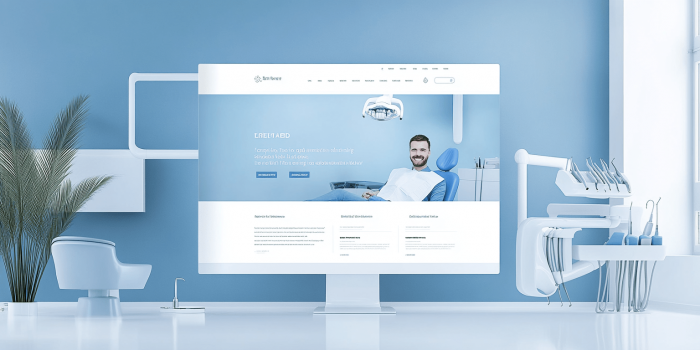- Key aspects of developing a clothing e-commerce website
- Essential functionality for selling clothes online
- Choosing the right platform for a clothing store
- How to attract customers and increase conversions
- Stages of turnkey clothing store development
- What affects the cost of an online clothing store
- Why choose QuatroIT – our web studio’s advantages
Online clothing sales have long been a key driver of growth for many brands, as the internet is now where first impressions of fashion are formed, where customers first encounter collections, and where purchase decisions are made. The visual appeal of a website plays a critical role in this process, but it only delivers results when combined with a well-thought-out structure, convenient functionality, and a stable technical foundation. Just as important is the specific nature of the business, so turnkey website development for an online clothing store must go beyond templates, fully addressing the needs of the target audience and ensuring room for future growth. Let’s explore in more detail how such a platform is built, what it requires, and what you should be prepared for when ordering a project.
Key aspects of developing a clothing e-commerce website
We believe the e-commerce niche has its own characteristics that determine both the visual design and the logic of the site’s operation. Due to the seasonal rotation of collections, content must be regularly updated, while the catalog structure needs to remain flexible to accommodate new arrivals and sales. Categories should be clearly defined and logically organized, allowing users to seamlessly switch between sections – from essential items to limited editions. This flexibility should benefit not only customers but also administrators who need to manage product listings and keep the assortment current.
The visual component plays a major role in effectively showcasing the product range and guiding the user’s attention. A catalog must strike a balance between usability and aesthetics – large, high-quality images, clearly marked banners for collections, promotions, and discounts, and intuitive navigation buttons. Transitions to product pages should be seamless, while product cards must be as informative as possible, enabling users to instantly view available options, check details, and proceed to checkout without unnecessary steps.

Essential functionality for selling clothes online
Visual design alone isn’t enough, so before launching a store, we advise clients to pay close attention to several key features:
- Catalog with filters. Ensures convenient browsing, allowing customers to quickly find what they need by category, color, size, or price – without navigating through multiple pages.
- Product cards. Include all the key information about each item, including photos, available options, sizing charts, and specifications – helping buyers make informed decisions without contacting support.
- Shopping cart and checkout. Offer a clear and consistent order flow where customers can choose delivery and payment options – and leave order notes if needed.
- Email marketing system. Automatically informs customers about new arrivals, personalized offers, discounts, and order status – via pre-configured email templates.
- CRM system. Centralizes data on customers, order history, preferences, and on-site behavior – enabling personalized communication and targeted promotions.
- External integrations. Connect payment gateways, delivery services, inventory systems, and analytics tools – automating daily operations and reducing manual effort.
- Admin panel. Gives the administrator full control over the website – from content updates and catalog management to promotions and adding new items.
Choosing the right platform for a clothing store
Platforms like WordPress with WooCommerce, OpenCart, and custom framework-based solutions deserve special attention. WooCommerce is effective for projects with a standard catalog structure – it allows quick launch and easy content management. For larger inventories that require stable performance under load and precise catalog logic, OpenCart is often the more appropriate choice. If built-in platforms lack necessary functionality, developing a custom solution on a PHP framework – with tailored integrations and workflows – becomes the best approach.

The CMS is selected based on the business’s nature and client preferences for managing the project. If simple admin tools and frequent updates are priorities, WordPress offers the most efficient solution. For complex catalogs, extensive product lines, and high performance – OpenCart is the more rational choice. Where custom logic or non-standard external integration is required, a bespoke solution is developed to fit the specific business model.
How to attract customers and increase conversions
To achieve measurable results, consider the following factors:
- SEO-friendly structure. Helps catalog, collection, and product pages appear in search engines – steadily increasing organic traffic without extra ad spending.
- Advertising campaigns. Allow targeted display of new arrivals and promotions to users already interested in similar items – increasing the chance of purchase.
- Visual content. Builds brand trust and product interest when photos and videos clearly show fit, texture, and detail.
- Catalog structure. When designed clearly and logically, it helps users make quicker decisions – by showing categories, filters, and intuitive layouts at a glance.
- Discount and promotion systems. Encourage faster purchases – especially when offers are time-limited or tied to low stock availability.
- User behavior analytics. Tracks where users leave the site – enabling timely adjustments to reduce conversion loss.
- Email newsletters and notifications. Maintain regular contact with customers – bringing them back to the store with relevant offers.
Stages of turnkey clothing store development
We follow a multi-step process for building turnkey websites:
- Briefing and task analysis. We begin with an online brief followed by project discussion, audience analysis, and product scope clarification.
- Prototyping and structure. We design page logic, catalog structure, and a filtering system tailored to product features and user convenience.
- Design and visuals. We create an interface that blends brand identity with intuitive navigation, mobile responsiveness, and clear conversion elements.
- Development and integrations. We build functionality on the selected platform, configure the CMS, and integrate the cart, checkout, payment methods, and third-party services.
- Testing and launch. We test the site across devices, implement final tweaks – and officially launch the project with ongoing support.

What affects the cost of an online clothing store
Each quote is calculated individually based on factors like:
| Catalog structure. | A large number of categories, collections, filters, and product variants requires detailed planning – increasing the project scope. |
| Project scope and functionality. | The more custom features and integrations needed – the higher the final implementation cost. |
| Chosen platform. | Custom platforms or complex CMS setups demand more development time and maintenance. |
| Custom design. | Creating a unique interface from scratch is more expensive than adapting a pre-designed template to fit the brand. |
| External service integrations. | Payment forms, CRM, inventory, and delivery systems require precise configuration and individual module testing. |
Why choose QuatroIT – our web studio’s advantages
Working with us gives you these key benefits:
- Results-oriented approach. We don’t just build websites – we create sales tools aligned with your business goals, product specifics, and real customer behavior.
- Balanced structure. We design catalogs, filters, and sections around user logic – making clothing selection fast and intuitive.
- Tailored solutions. We adapt the technical setup to your brand needs – without overloading the site with features that offer no value.
- End-to-end process. We manage every stage – from analysis to launch – as a single, logically connected workflow.
- Post-launch support. We continue working with you after publication – supporting content updates and further functional improvements.
Interested in building an online store and want confidence in the final result? Then we invite you to collaborate. Our team takes a comprehensive approach to each project, addressing every client request and business detail – enabling us to deliver even the most complex or unconventional solutions. QuatroIT web studio – we work for you!











